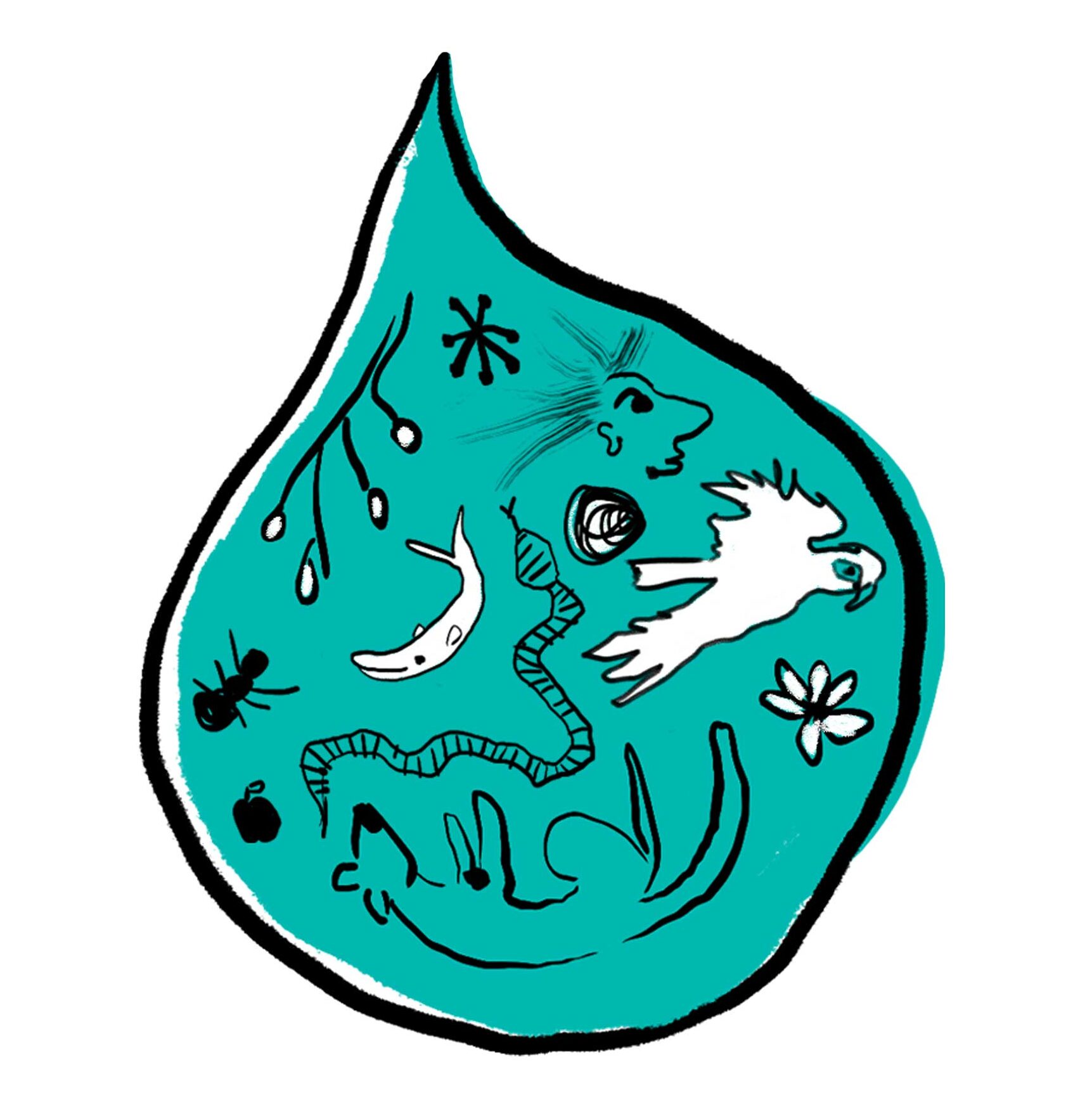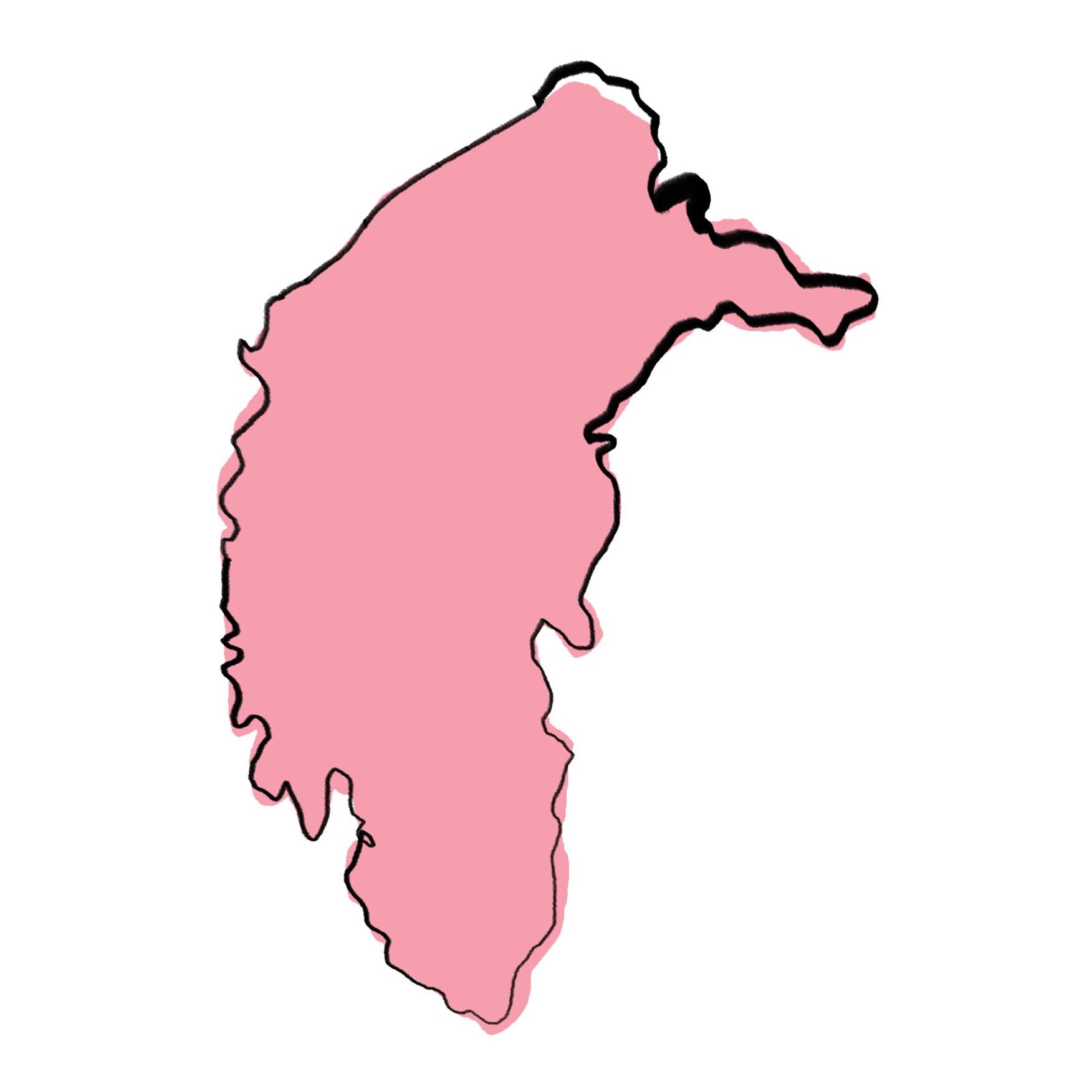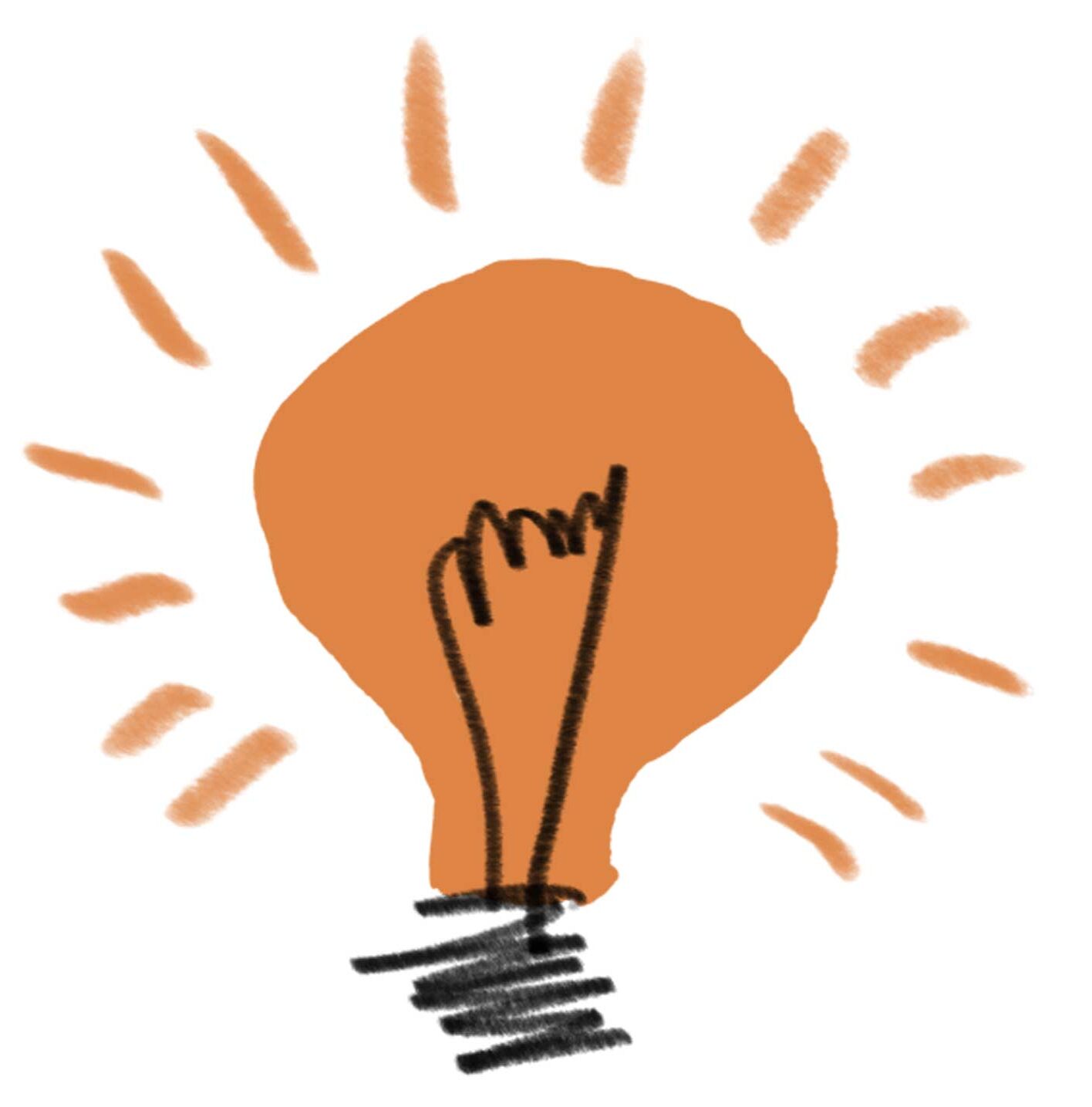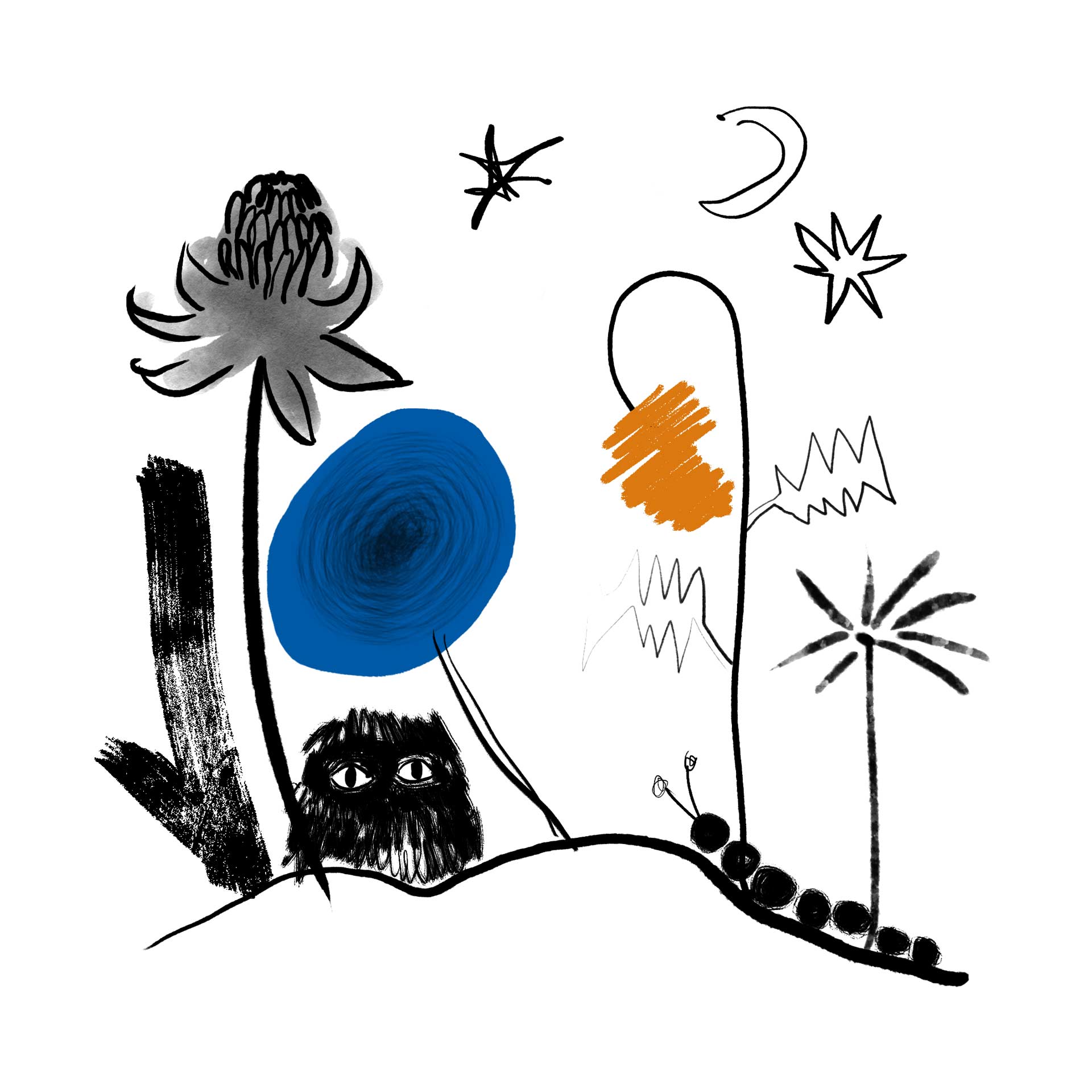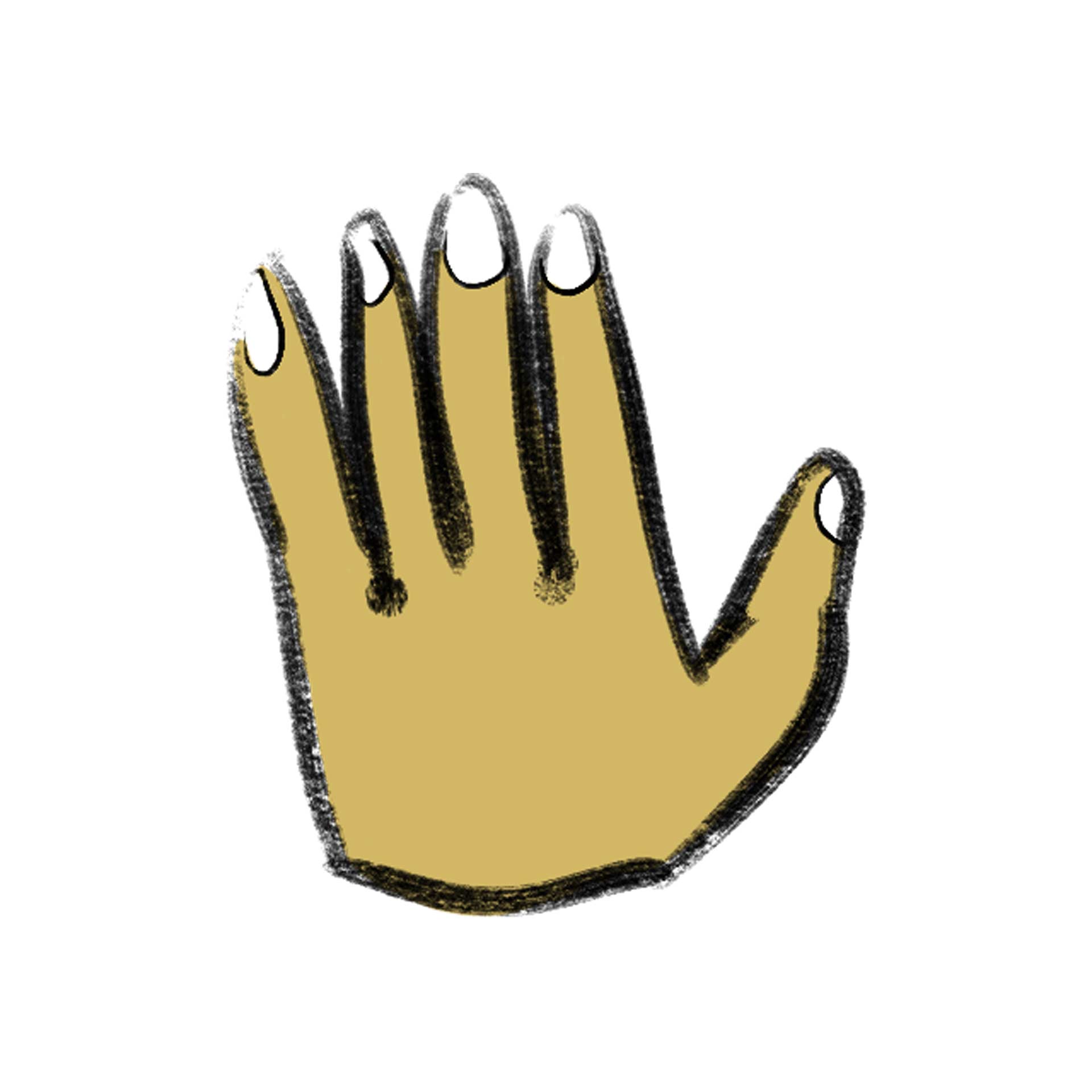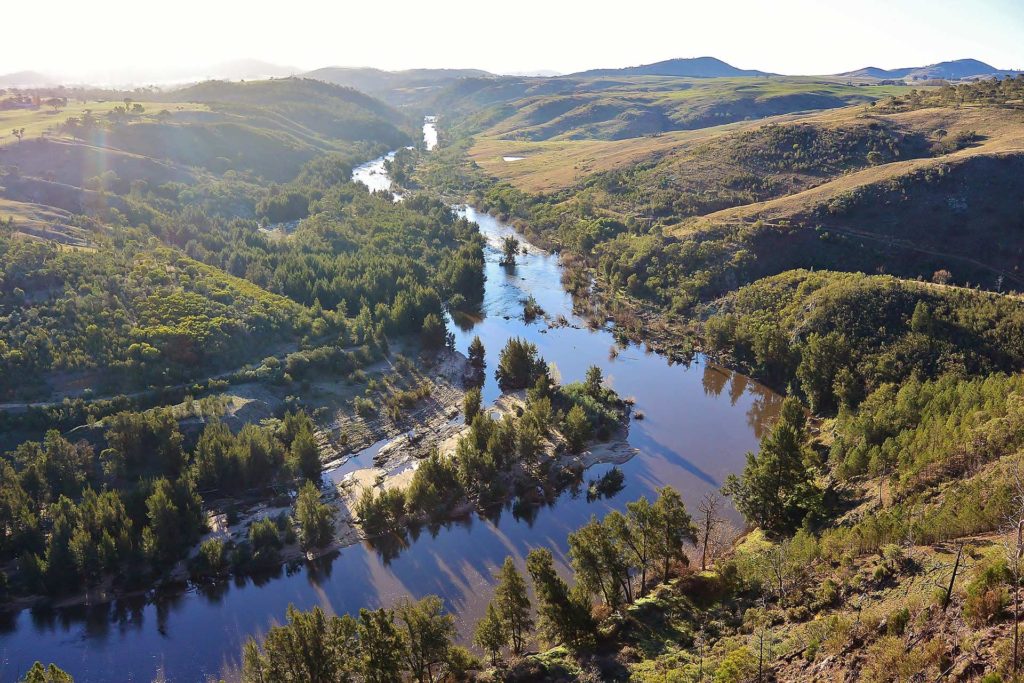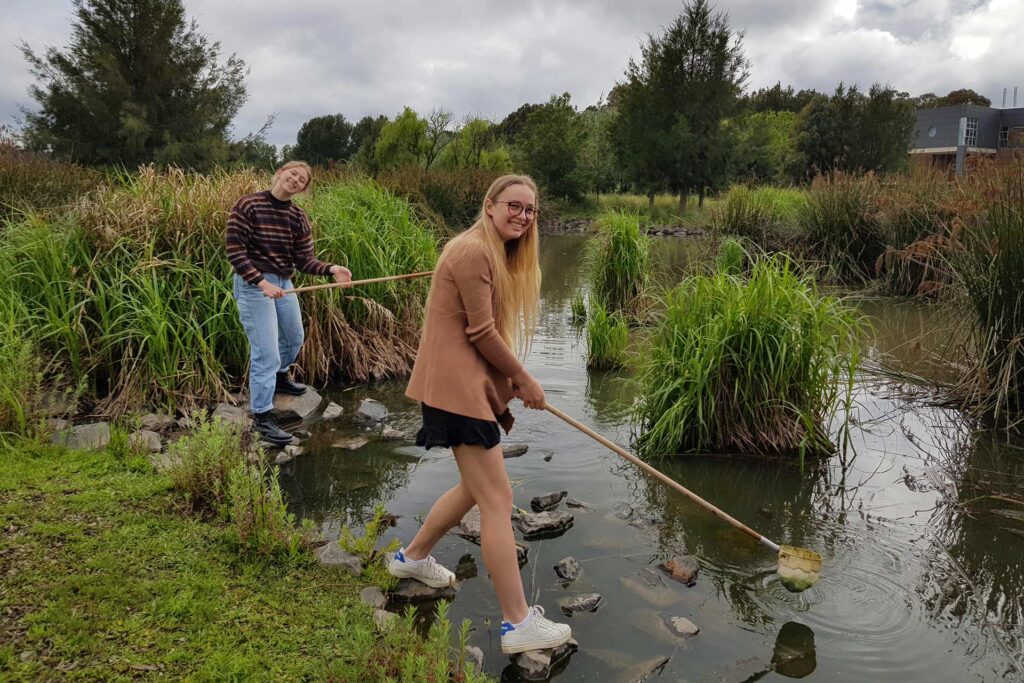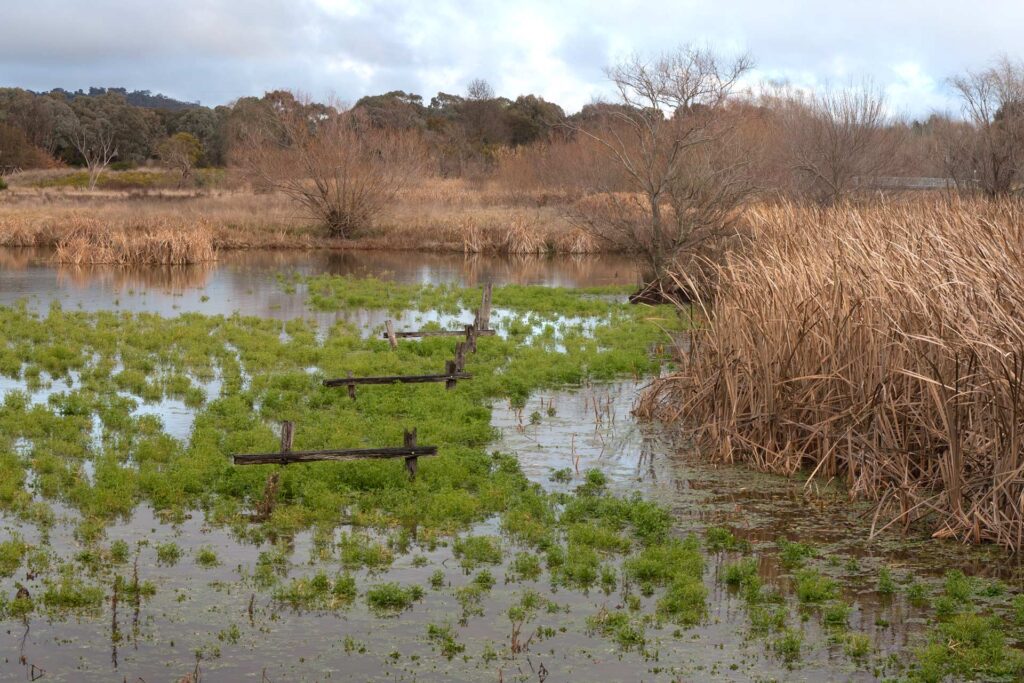Did you know all our waterways are connected? Let’s find out how healthy they are.
Click the links below to discover more!
Water is precious
Did you know that the water we have on Earth now is the same water that the dinosaurs drank?
We have a set amount of water on Earth: the amount of water doesn’t increase or decrease, it just moves through the atmosphere and the environment (this is known as the water cycle). Water covers 70 per cent of the Earth’s surface, but most of this is saltwater in our oceans. Only about three per cent of the water on Earth is freshwaterWater in rivers, lakes, wetlands, and underground that is not salty., and most of this is either frozen, in the air, or underground. Less than one per cent of the Earth’s water is freshwaterWater in rivers, lakes, wetlands, and underground that is not salty. that is available for people and animals to use – which is why it is so precious.
Because of differences in rainfall, some places have lots of freshwaterWater in rivers, lakes, wetlands, and underground that is not salty., but in other places, such as deserts, there is almost none.
It is important that our water is clean and that there is enough of it for:
- plants and animals
- people (for drinking, growing food, washing, and having fun – like swimming or boating)
- cultural reasons – the Murrumbidgee River (and other rivers in the ACT) represent SonglinesSonglines are like pathways of knowledge that crisscross the land, sky and water. Songlines connect important stories and places across Australia, and help Aboriginal people to navigate. and DreamingsDreamings represent the time when Ancestral Spirits moved through the land, creating life and important places. Dreamings are passed down and shared by many Aboriginal communities across Australia. for the Ngunnawal people.
ACT’S RIVERS, LAKES AND WETLANDS
The ACT’s largest river is the Murrumbidgee. This river begins in the NSW mountains and flows through the ACT, passing through the CountryFor Aboriginal people, the word Country describes the lands, waterways and seas that they are connected to. The word also relates to the cultural stories, beliefs and practices that connect Aboriginal people with the land. of many different Aboriginal groups. In the Wiradjuri language, Murrumbidgee means ‘big water’. The Murrumbidgee is the second longest river in Australia!
Some other rivers in the ACT are the:
- Cotter River
- Gudgenby River
- Molonglo River
- Paddys River
Murrumbidgee River. Source: Mark Jekabson
Canberra has 3 lakes: Lake Burley Griffin, Lake Ginninderra and Lake Tuggeranong. These were constructed by people and did not exist before Canberra was built. There are also many other constructed ponds and wetlandsAreas of land that are waterlogged (wet) or covered with shallow water. Wetlands can be seasonal, only existing for short periods of time, or they can be permanent. in the Canberra area. These were mainly created to capture pollutionHarmful substances that can damage the environment. Water pollutants include chemicals, fertilisers, bacteria, viruses, animal or human waste, and too many nutrients. and stop it getting into our rivers.
The ACT has 11 nationally important wetlandsAreas of land that are waterlogged (wet) or covered with shallow water. Wetlands can be seasonal, only existing for short periods of time, or they can be permanent. and the Ramsar-listed Ginini Flats Wetland Complex in Namadgi National Park. Ramsar wetlandsAreas of land that are waterlogged (wet) or covered with shallow water. Wetlands can be seasonal, only existing for short periods of time, or they can be permanent. are those that have been recognised across the world as being very important because they are rare, unique, or home to lots of species. All wetlandsAreas of land that are waterlogged (wet) or covered with shallow water. Wetlands can be seasonal, only existing for short periods of time, or they can be permanent. are important for conserving biodiversityAll of the different types of life in the environment. Biodiversity includes plants, animals, and micro-organisms (really small things like bacteria and fungi)..
Meet some of the ACT’s waterways!
Click the pictures to find out more.
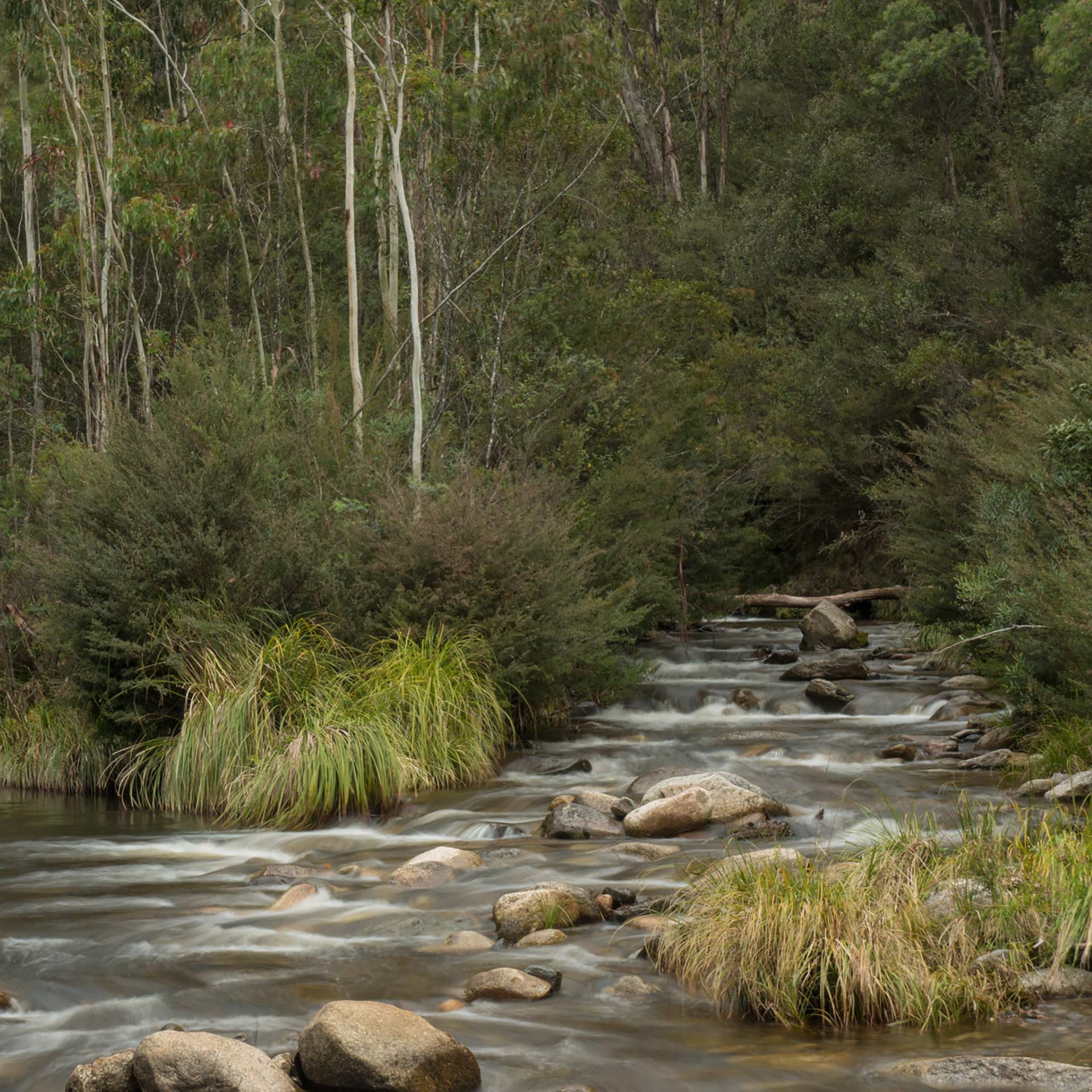
The Cotter River
Provides the ACT’s drinking water! The Cotter catchmentAn area of land where rain falls and then flows into rivers, lakes and wetlands. is protected to help keep the river clean and healthy.

Jerrabomberra Wetlands
Supports more than 170 different bird species, including migratory birds like the rare Latham’s Snipe!
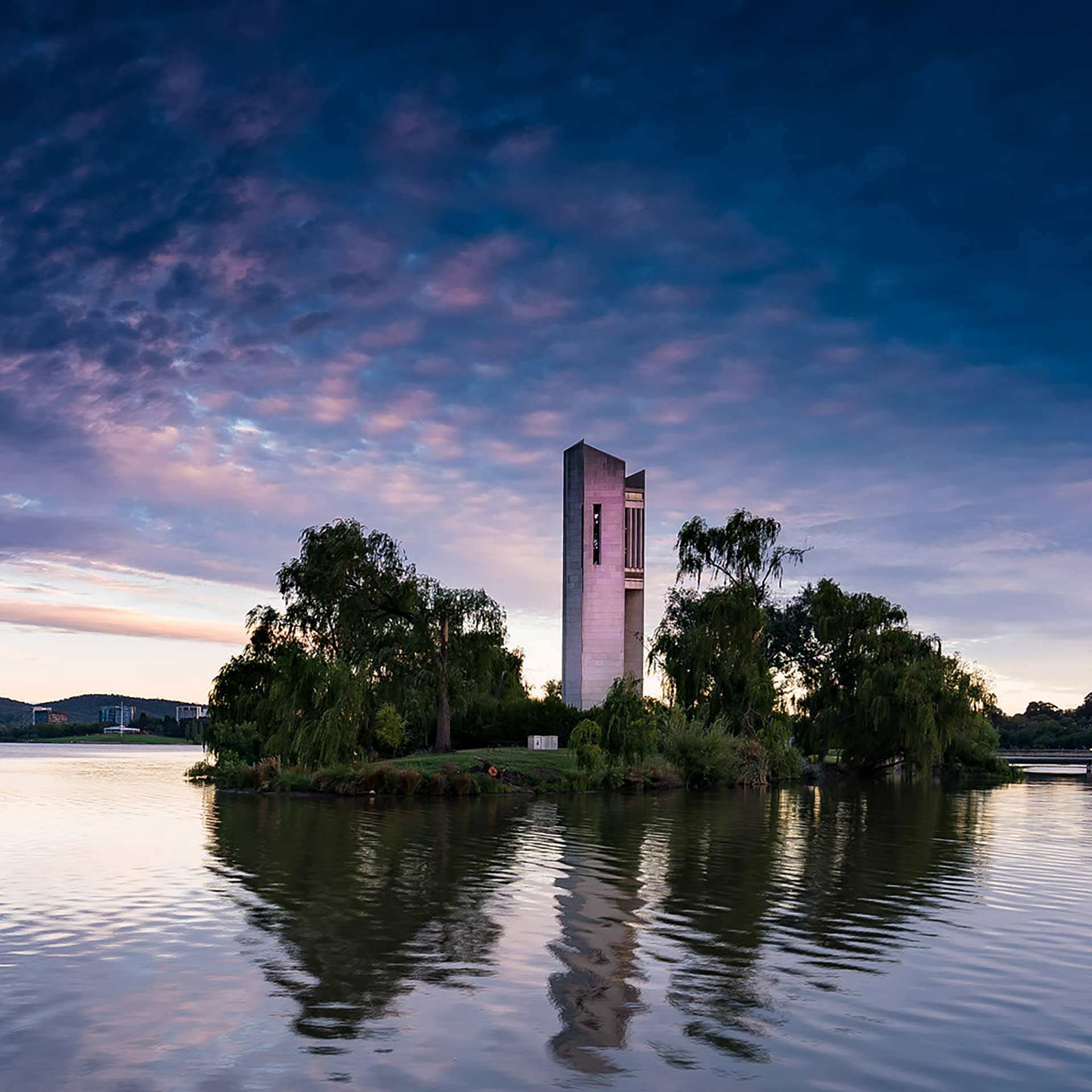
Lake Burley Griffin
Canberrans love walking, swimming and sailing here! The lake also helps prevent flooding and improves water qualityHow clean the water is in rivers, lakes and wetlands. Good water quality has low levels of pollutants. downstream.

Murrumbidgee River
The largest river in the ACT! All the ACT’s rivers and creeks eventually flow into the Murrumbidgee.
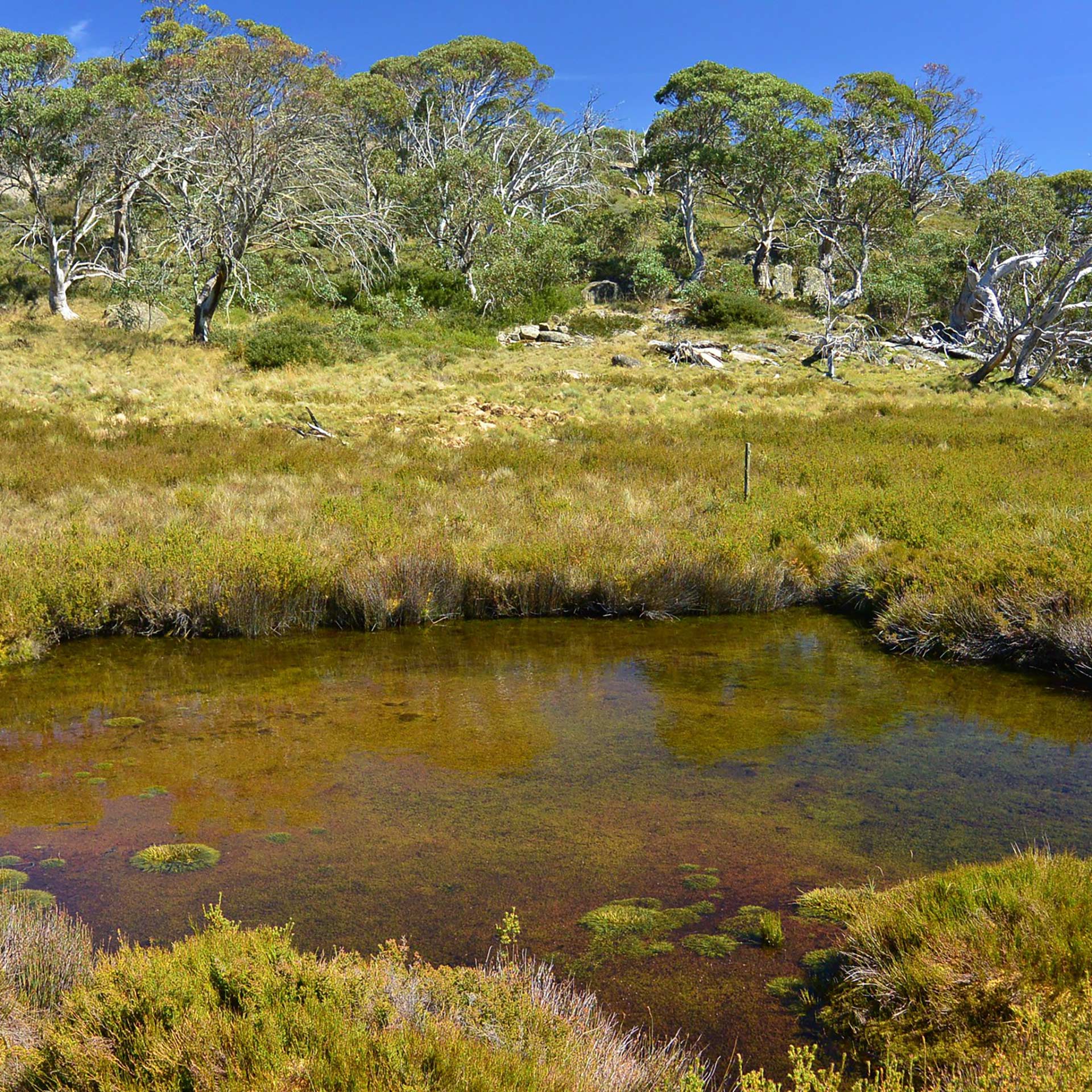
Ginini Flats Wetland
Supports threatened species like the Northern Corrobboree Frog and Broad-toothed Rat. This wetland is internationally important!
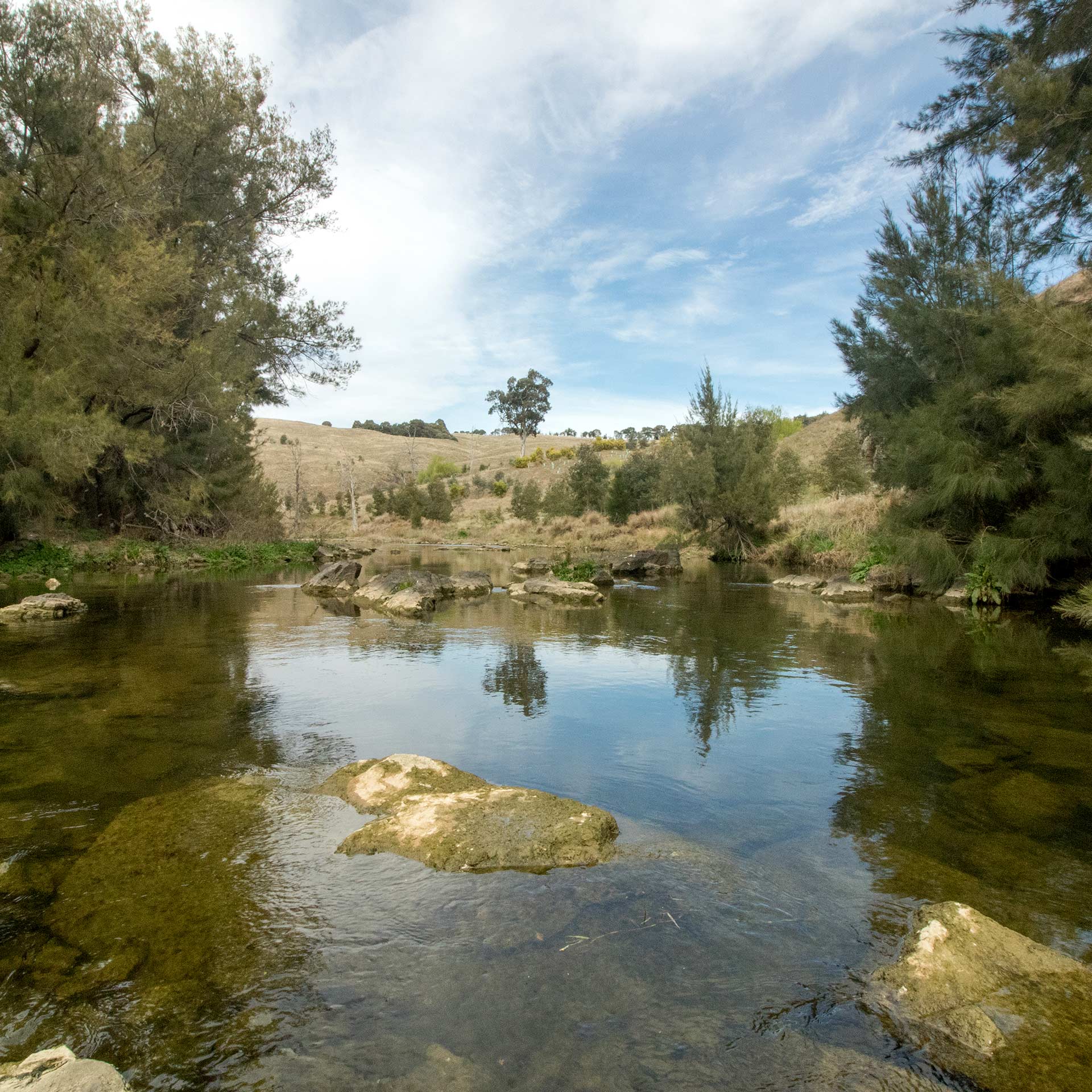
The Molonglo River
Starts in NSW and flows into Lake Burley Griffin, providing habitatThe natural home or environment of a plant or animal. for threatened species like the Pink-tailed Worm-lizard. The river is also a favourite spot for swimming and picnics.
Images: Murrumbidgee River, source: Matt Sherren Photography; Molonglo River and Jerrabomberra WetlandsAreas of land that are waterlogged (wet) or covered with shallow water. Wetlands can be seasonal, only existing for short periods of time, or they can be permanent., source: Ryan Colley; Lake Burley Griffin, source: Jerry Skinner; Cotter River and Ginini Flats Wetland, source: Mark Jekabsons
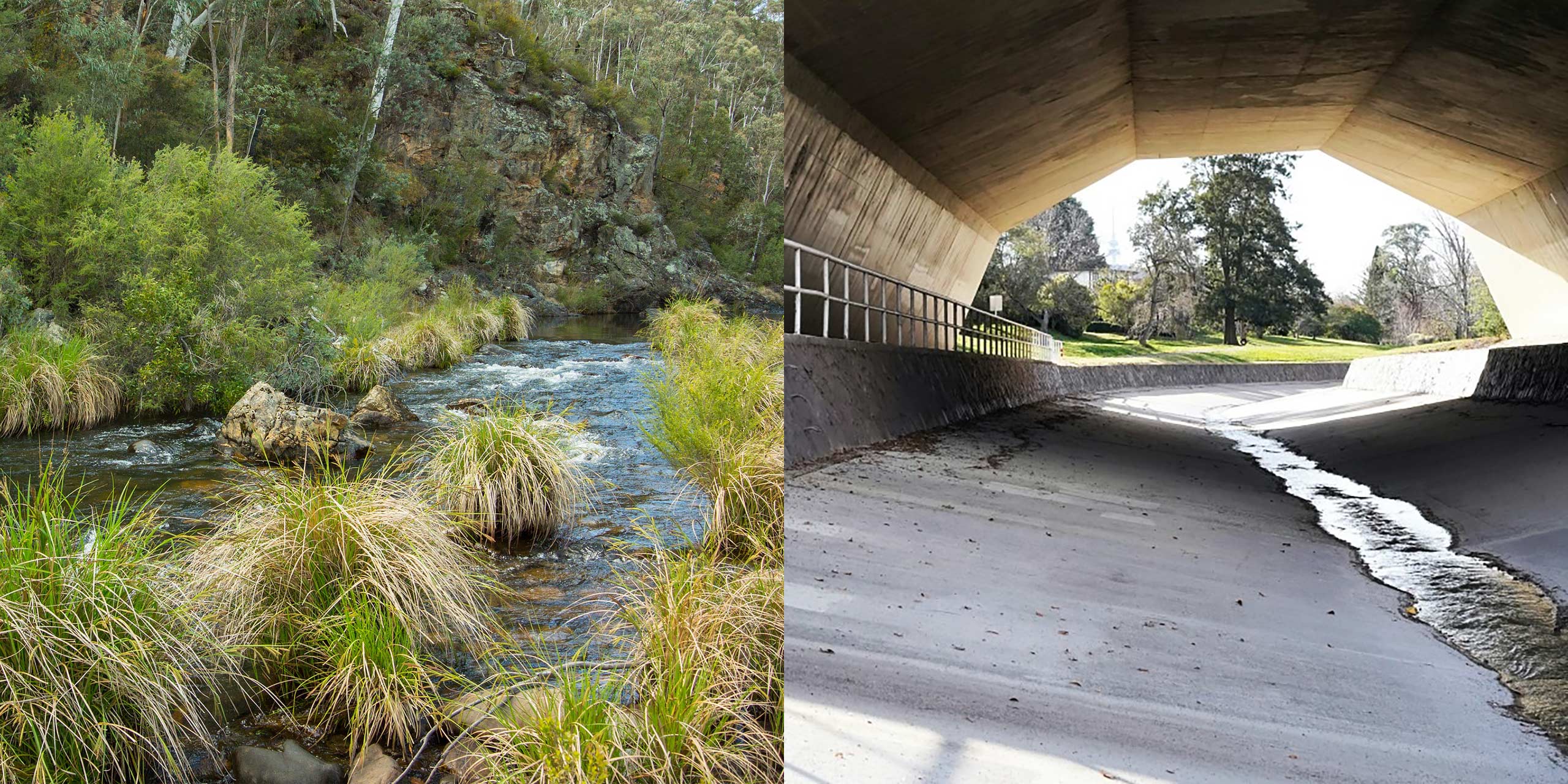
Healthy rivers, lakes and wetlands
We need to keep our rivers, lakes and wetlands healthy so people and the animals that live there have clean water. Water can be contaminated by pollutants – when we measure the pollutants in a waterway, it is called measuring the water quality.
Rivers, lakes and wetlandsAreas of land that are waterlogged (wet) or covered with shallow water. Wetlands can be seasonal, only existing for short periods of time, or they can be permanent. also need plants, because plants help keep waterways clean. Riparian vegetationPlants that grow along the edges of creeks, rivers, lakes and wetlands. help keep waterways clean by acting like a filter for nutrientsElements such as nitrogen and phosphorus. Too many nutrients in water can cause large amounts of algae to grow, harming other plants and animals., sedimentParticles of dirt, rocks, and dead plant or animal matter. Too much sediment in water can harm plants and animals. and other pollutantsHarmful substances that can damage the environment. Water pollutants include chemicals, fertilisers, bacteria, viruses, animal or human waste, and too many nutrients.. These are carried in water running off urbanAreas of land that have been built on to create a city or town. areas such as concrete and roads, or off farm paddocks that have livestock (sheep and cows) or use chemicals to help crops grow. When pollutantsHarmful substances that can damage the environment. Water pollutants include chemicals, fertilisers, bacteria, viruses, animal or human waste, and too many nutrients. are washed into rivers, wetlandsAreas of land that are waterlogged (wet) or covered with shallow water. Wetlands can be seasonal, only existing for short periods of time, or they can be permanent. and lakes they affect the species living there. A healthy river also needs enough water flowing along it. This not only provides the habitatThe natural home or environment of a plant or animal. that plants and animals need, but also helps to keep oxygen in the water for the animals that live in it.
How do we measure the health of rivers, lakes and wetlands?
There are different ways to measure the health of rivers, lakes and wetlandsAreas of land that are waterlogged (wet) or covered with shallow water. Wetlands can be seasonal, only existing for short periods of time, or they can be permanent., including:
- measuring biodiversity – the types of plants and animals that live in the water, even little things like water insects (these are called macroinvertebrates). Healthy rivers, lakes and wetlandsAreas of land that are waterlogged (wet) or covered with shallow water. Wetlands can be seasonal, only existing for short periods of time, or they can be permanent. will have lots of nativeAnimals and plants that live in, and are originally from, an area. The area could be large, like Australia, or it could be small, like a specific national park. species in the water, and along their banks and edges.
- measuring river flow – how much water is flowing in the rivers. Rivers, lakes and wetlandsAreas of land that are waterlogged (wet) or covered with shallow water. Wetlands can be seasonal, only existing for short periods of time, or they can be permanent. need to have enough water to stay healthy and to support plants and animals.
- measuring water quality – healthy water is free from pollutionHarmful substances that can damage the environment. Water pollutants include chemicals, fertilisers, bacteria, viruses, animal or human waste, and too many nutrients. that can harm plants and animals. Where water is used for recreation (fun activities like swimming, canoeing and fishing), we can also test whether water contains bacteria, blue-green algae or chemicals that could make people sick.
By looking at all these measurements, we can assess the health of the ACT’s rivers, lakes and wetlandsAreas of land that are waterlogged (wet) or covered with shallow water. Wetlands can be seasonal, only existing for short periods of time, or they can be permanent..
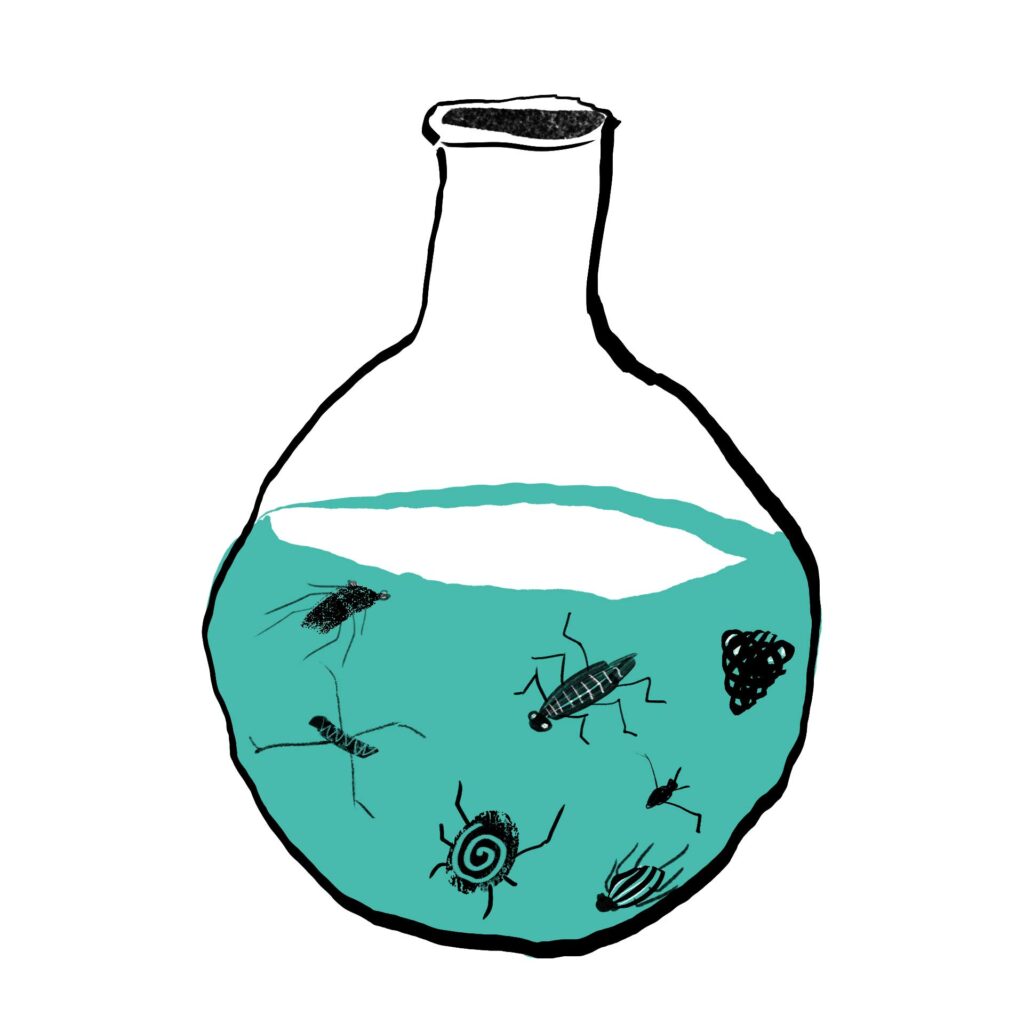
ARE ACT’S RIVERS, LAKES AND WETLANDS HEALTHY?
The overall health of the ACT’s rivers and creeks depends on where they are. Rivers in conservation areas (parks and reserves) are mostly in good health because there are lots of trees and other plants which keep the water clean.
But rivers near urban areas and farms are less heathy. This is because most of the plants in these areas have been removed.
River flow changes are also impacting on the ACT’s rivers and wetlandsAreas of land that are waterlogged (wet) or covered with shallow water. Wetlands can be seasonal, only existing for short periods of time, or they can be permanent.. Because of climateThe usual weather that happens in an area over a long time, usually many years. Climate change is when this usual weather changes. change, there is now less rainfall and less water available for our rivers and wetlandsAreas of land that are waterlogged (wet) or covered with shallow water. Wetlands can be seasonal, only existing for short periods of time, or they can be permanent.. When there is less water for long periods of time, plants and animals can suffer as their food and habitatsThe natural home or environment of a plant or animal. are lost.
Water qualityHow clean the water is in rivers, lakes and wetlands. Good water quality has low levels of pollutants. is mostly good in the ACT, even in rural (farming areas) and urbanAreas of land that have been built on to create a city or town. areas! But our recreational water qualityHow clean the water is in areas used for recreation (activities like swimming, canoeing and fishing). Recreational water quality is good when there are low levels of bacteria and blue-green algae, which can make people sick. can be poor. In the summer, recreational areas in our lakes and rivers can be closed because there is too much blue-green algae and bacteria in the water. These can make people sick if they get the water on their skin or if they accidently swallow the water. Most of the recreational and other water qualityHow clean the water is in rivers, lakes and wetlands. Good water quality has low levels of pollutants. problems are from the pollutantsHarmful substances that can damage the environment. Water pollutants include chemicals, fertilisers, bacteria, viruses, animal or human waste, and too many nutrients. washed into rivers and lakes by rainfall. UrbanAreas of land that have been built on to create a city or town. areas and rural areas are where most of the water pollutantsHarmful substances that can damage the environment. Water pollutants include chemicals, fertilisers, bacteria, viruses, animal or human waste, and too many nutrients. come from in the ACT.
InvasivePlants and animals that are not native to Australia. These are also known as introduced species. fish species such as carp, rainbow trout, brown trout and redfin perch are also a problem in the ACT. In some rivers, there are far more invasivePlants and animals that are not native to Australia. These are also known as introduced species. fish than nativeAnimals and plants that live in, and are originally from, an area. The area could be large, like Australia, or it could be small, like a specific national park. fish. For example, up to 80% of the fish in the Murrumbidgee River are invasivePlants and animals that are not native to Australia. These are also known as introduced species. species!
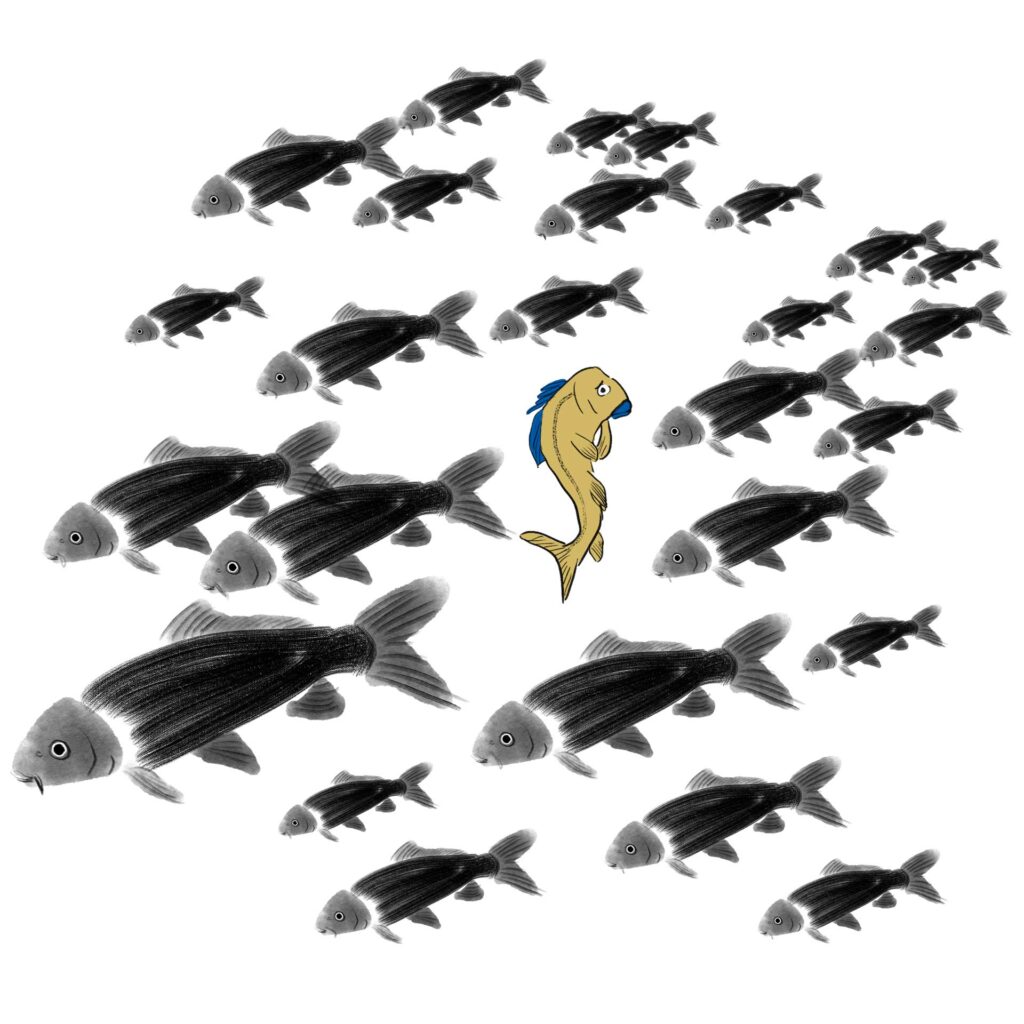
WHAT ARE THE MOST COMMON IMPACTS ON THE HEALTH OF THE ACT’S RIVERS, LAKES AND WETLANDS?
- Bushfires – after bushfires, ash, soil and dead plants can be washed into rivers and wetlandsAreas of land that are waterlogged (wet) or covered with shallow water. Wetlands can be seasonal, only existing for short periods of time, or they can be permanent.. This can lead to poor water qualityHow clean the water is in rivers, lakes and wetlands. Good water quality has low levels of pollutants. and the loss of plant and animal species. It can also impact on our drinking water reservoirs.
- Climate change – the Earth is warming and there are longer, hotter, drier droughts. This means less water for the ACT’s rivers, lakes and wetlandsAreas of land that are waterlogged (wet) or covered with shallow water. Wetlands can be seasonal, only existing for short periods of time, or they can be permanent. and the biodiversityAll of the different types of life in the environment. Biodiversity includes plants, animals, and micro-organisms (really small things like bacteria and fungi). they support.
- Invasive species – high numbers of invasivePlants and animals that are not native to Australia. These are also known as introduced species. plants and animals compete for food and habitatThe natural home or environment of a plant or animal. with nativeAnimals and plants that live in, and are originally from, an area. The area could be large, like Australia, or it could be small, like a specific national park. species, and some invasivePlants and animals that are not native to Australia. These are also known as introduced species. species can kill and eat nativeAnimals and plants that live in, and are originally from, an area. The area could be large, like Australia, or it could be small, like a specific national park. animals.
- Clearing land for urban areas – land clearing removes the trees and other vegetation that help to keep rivers, lakes and wetlandsAreas of land that are waterlogged (wet) or covered with shallow water. Wetlands can be seasonal, only existing for short periods of time, or they can be permanent. healthy. Development of urbanAreas of land that have been built on to create a city or town. areas also means more concrete surfaces which increase water pollutionHarmful substances that can damage the environment. Water pollutants include chemicals, fertilisers, bacteria, viruses, animal or human waste, and too many nutrients. and soil erosionWhen soil is carried away by water or wind. Soil erosion can reduce biodiversity, harm rivers when soil is washed into waterways, and create dust storms., and reduce habitatThe natural home or environment of a plant or animal. for plants and animals.
Ash and soil pollute our rivers after bushfires. Source: Mark Jekabsons
What do kids in Canberra have to say about rivers, lakes and wetlandsAreas of land that are waterlogged (wet) or covered with shallow water. Wetlands can be seasonal, only existing for short periods of time, or they can be permanent.?
Click through these postcards to find out!
Want to know more? Check out our kid-friendly report about young people’s hopes for the environment called:
WHAT CAN WE ALL DO TO HELP KEEP OUR RIVERS, LAKES AND WETLANDS HEALTHY?
- Re-think What Goes Down the Sink: Choose environmentally friendly dishwashing, shower, and laundry soaps to reduce the chemicals that wash into our waterways. Look for labels that say “green” or “eco-friendly.”
- Attend a Clean-Up Day: Join a local clean-up event with your family and friends at places like Lake Burley Griffin or Jerrabomberra WetlandsAreas of land that are waterlogged (wet) or covered with shallow water. Wetlands can be seasonal, only existing for short periods of time, or they can be permanent.. See who can collect the most rubbish and make the area sparkle.
- Reduce Water Waste: Turn off the tap while brushing your teeth, take shorter showers, and talk with your family about getting a rainwater tank for your garden. Every drop counts!
- Clean Up Leaves: Pick up fallen leaves from your garden and street. This prevents them from being washed into rivers and lakes, which can harm water qualityHow clean the water is in rivers, lakes and wetlands. Good water quality has low levels of pollutants..
- Make Your Yard Frog-Friendly: Encourage frogs to come live in your garden by creating a frog-friendly area with water, rocks, and nativeAnimals and plants that live in, and are originally from, an area. The area could be large, like Australia, or it could be small, like a specific national park. plants. For more information click here!
- Put Rubbish in the Bin: Any litter dropped in the street can be washed or blown into our waterways, harming plants and animals.
A hands-on way to help local waterways is to join a volunteer community group with your family. Help plant nativeAnimals and plants that live in, and are originally from, an area. The area could be large, like Australia, or it could be small, like a specific national park. species along the sides of creeks and rivers, or join WaterWatch to monitor water qualityHow clean the water is in rivers, lakes and wetlands. Good water quality has low levels of pollutants., water bugs and river plants. Collecting information about your local waterway helps scientists better understand water across the ACT and Australia.
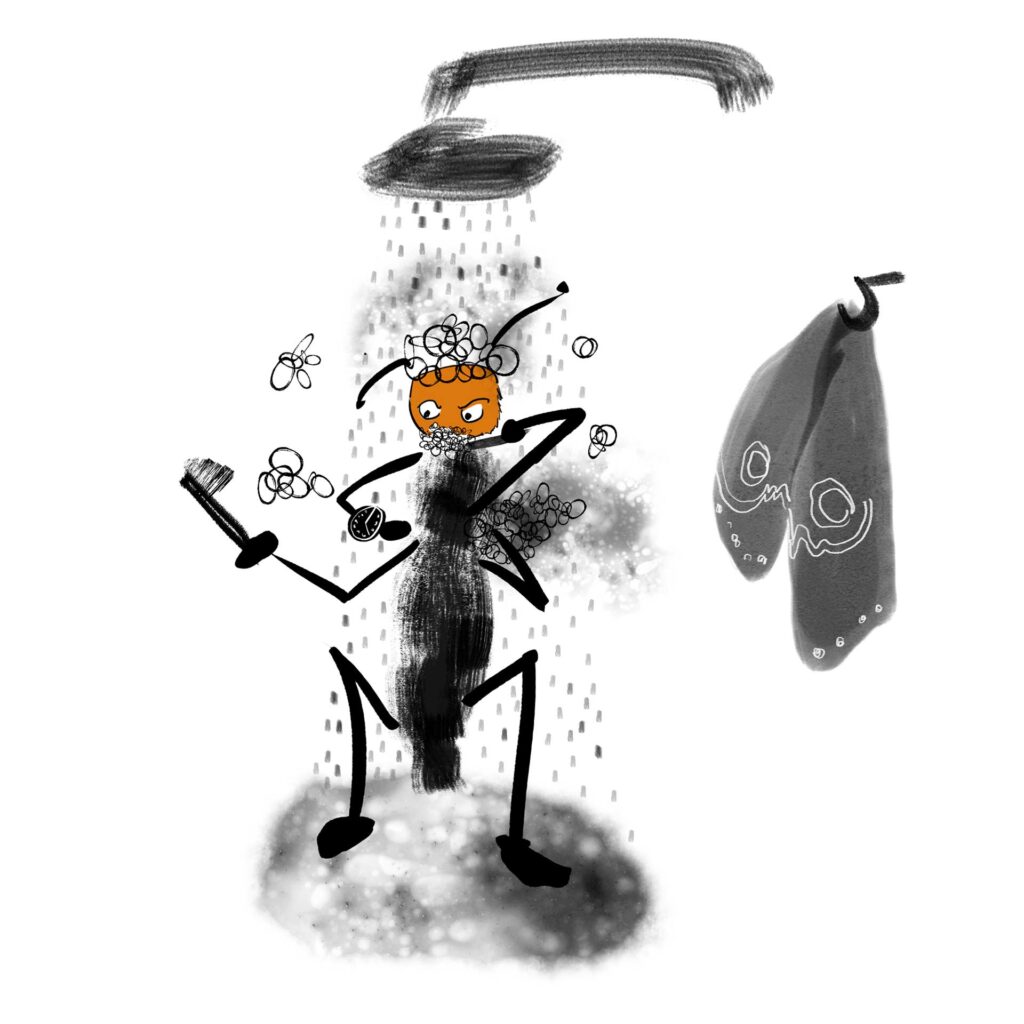
Note that most volunteering opportunities in the ACT will require you to be accompanied by someone over the age of 18.
LET’S GET OUTSIDE
Visit Jerrabomberra Wetlands to discover Canberra’s wetland wildlife.
Jerrabomberra WetlandsAreas of land that are waterlogged (wet) or covered with shallow water. Wetlands can be seasonal, only existing for short periods of time, or they can be permanent.. Source: Raw Shorty
Activities
CLUES FOR HEALTHY WATERWAYS
The health of rivers, lakes and wetlandsAreas of land that are waterlogged (wet) or covered with shallow water. Wetlands can be seasonal, only existing for short periods of time, or they can be permanent. has a lot to do with the land surrounding them (also called a catchmentAn area of land where rain falls and then flows into rivers, lakes and wetlands.). Just by looking at a waterway and its catchmentAn area of land where rain falls and then flows into rivers, lakes and wetlands., we can often find clues to tell us if it is healthy or not.
Click on the symbol in the pictures below to discover the clues we can look for, and whether these are good or bad for the health of our waterways.

Source: Mark Jekabsons
Source: Miranda Gardner
Now that you know what to look for, examine the three photos below. When you’re ready, take the quiz to test your detective skills!
Fantastic Frogs
Every year, volunteers of all ages go out to listen for frogs as part of the FrogWatch Census. This helps scientists understand the types of frogs we have around the ACT, as well as how many there are!
Before you go out in the field, you can learn the sounds different frogs make from the comfort of your couch!
Get to know the frog calls below. When you’re ready, test your skills by taking the quiz!
Frog calls and photos kindly provided by the Ginninderra Catchment Group.

Keen for more?
If you want to take your frog skills to the next level, check out this page. Here you can learn even more frog calls, and practice listening to lots of different frogs at once!
You can also download the FrogID or Canberra Nature Map app to start recording your findings in the field! This handy guide has lots of information to help you out:
CLEAN UP THE LAKE!
This swan in Lake Burley Griffin needs your help! Clean up the water by answering all of the questions correctly.
A WATERWAY WORDSEARCH
CRACK-ME-UP CROSSWORD
COLOURFUL FLOWERS
Watch how flowers absorb colours!
This activity shows us how plants help to keep our rivers, lakes and wetlandsAreas of land that are waterlogged (wet) or covered with shallow water. Wetlands can be seasonal, only existing for short periods of time, or they can be permanent. clean by absorbing pollutantsHarmful substances that can damage the environment. Water pollutants include chemicals, fertilisers, bacteria, viruses, animal or human waste, and too many nutrients. in the water.
You will need:
- red, blue, green food dye
- 3 vases, filled almost to the top with warm water
- 3 white flowers, cut with a long stem (white chrysanthemums, carnations and roses work well)

Add 30 drops of red food dye to a vase of warm water. Repeat this, adding blue dye to another vase of warm water and green dye to a third.
Cut a little bit off the bottom of each stem, cutting on an angle to increase the surface area of the stem.
Then place one flower in each vase and leave for a few days. Watch over the next few days to see what happens to the colour of the flower petals.


